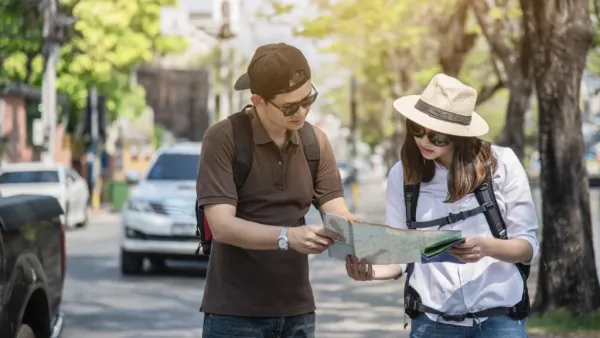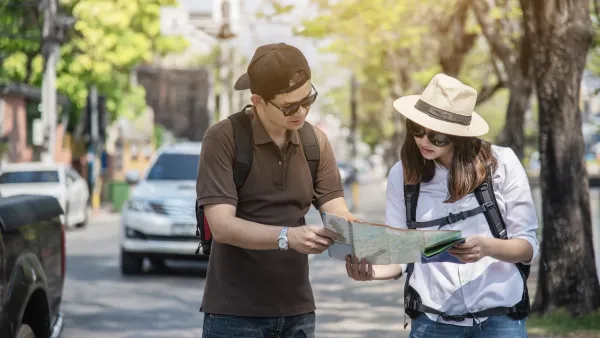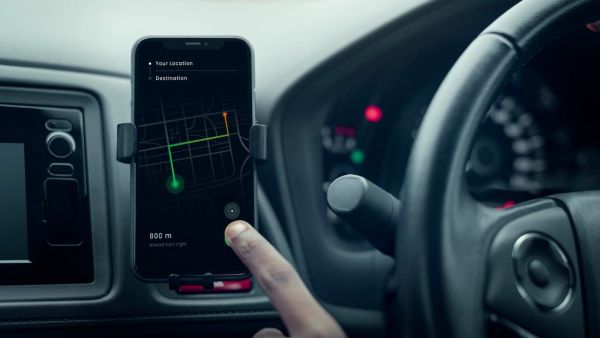

Highlights
- Public transport in Jakarta includes MRT and BRT for fast, clean commuting.
- Yogyakarta’s public transport blends becaks, angkots, and ride apps.
- Bandung’s public transport features angkots, buses, and future light rail.
- Surabaya leads in public transport innovation with Suroboyo Bus.
- Medan’s public transport is less structured, relying on vans and bike taxis.
- Bali’s public transport is limited, but ride apps and rentals fill the gap.
How do locals and tourists move around in the busy cities of this vibrant archipelago? What are the best ways to navigate these urban areas without confusion? With millions of people commuting daily, city transportation has grown into a blend of traditional and modern solutions.
Buses, trains, motorbike taxis, and ride-sharing apps all play a part. Some routes are predictable, while others require local knowledge. Reliable digital access helps with maps, schedules, and booking apps. Using tools such as Indonesia Data Esim ensures travelers stay connected when navigating unfamiliar routes. Let’s explore the key things to know before boarding any ride across the country’s major urban centers.
Jakarta’s Evolving Transit System
Jakarta, the capital, is known for its dense traffic. However, improvements in its transportation system have helped ease congestion. The MRT (Mass Rapid Transit) is clean, affordable, and connects central business districts. BRT services like TransJakarta also offer dedicated bus lanes to avoid delays during peak hours.
Yogyakarta: A Mix of Tradition and Modern Moves
Yogyakarta offers a charming blend of traditional and modern ways to move around the city. Here’s what travelers should know when choosing local transportation:
- Becaks for Short, Scenic Rides
Cycle rickshaws, known as becak, are widely used in central tourist areas. They offer slow, pleasant rides that showcase the city’s streets and local life. - Angkots as Budget-Friendly Options
These small, shared vans connect different neighborhoods at very low costs. However, they don’t follow fixed schedules, so asking locals for help can be useful. - Ride-Hailing Apps for Added Convenience
Digital transport apps offer quick, reliable rides across town. These services are ideal for reaching places not covered by traditional routes.

Bandung’s Efficient and Scenic Routes
Bandung features cooler temperatures and scenic surroundings. Travel options here include angkot vans, buses, and online taxis. The city is investing in better transport infrastructure, including the upcoming light rail system. To avoid traffic, many locals rely on motorbike taxis, which are fast and affordable.
Surabaya: Organized and User-Friendly
Surabaya stands out for its clean streets, innovative transport ideas, and a well-structured city layout. Here are the key features of getting around in this East Javan city:
- Clean and Organized Roads
Compared to many urban areas, Surabaya has wider, well-maintained roads and clear signage. This makes driving and navigating the city easier for both locals and visitors. - Suroboyo Bus and Plastic Fare System
The Suroboyo Bus accepts plastic bottles instead of money, promoting recycling and accessible transport. This creative system has gained global attention and supports local sustainability efforts. - Easy Access to Taxis and Ride-Hailing Apps
App-based transport and standard taxis are widely available. These services in Indonesia offer convenience, fixed pricing, and easy pickup across most city zones.


Medan: Flexible But Less Structured
Medan, in North Sumatra, has fewer formal systems in place. Motorbike taxis and shared vans dominate the local scene. Traffic can be chaotic, and signage may be limited. Tourists in Indonesia are advised to confirm prices in advance or use apps that show fare estimates, especially when traveling long distances.
Denpasar and Bali’s Tourist Routes
In Bali, private drivers and motorbike rentals are the most used travel options. Denpasar, the island’s capital, has limited bus service but plenty of online ride options. Tourists traveling to areas like Ubud or Seminyak can benefit from planning routes ahead of time. Indonesia Data Esim in these regions can help with real-time traffic updates and driver contact.
Using Ride-Hailing Apps Smartly
Apps like Gojek and Grab have changed urban travel in this country. They are used for cars, bikes, food delivery, and even courier services. Prices are fixed through the app,
so there’s no need to bargain. These platforms also include safety features like location sharing and emergency contact settings.
Helpful Tips for First-Time Riders
Getting around in the busy cities of Indonesia becomes easier with a few simple strategies. These practical tips can help travelers move smoothly through unfamiliar routes:
- Carry Small Cash for Local Rides
Smaller vans, buses, and local drivers often accept only cash. Keeping small denominations avoids confusion or payment issues during short trips. - Use Translation Apps When Needed
Most local drivers do not speak English fluently. A good translation app makes it easier to explain destinations or ask basic questions. - Avoid Peak Hour Travel When Possible
Traffic gets heavy in the morning and evening. Traveling during off-peak times can help avoid delays and crowded vehicles. - Plan Routes with Online Maps and Reviews
Digital maps and traveler reviews offer insights into stop locations and travel times. These tools help reduce stress and unexpected detours.
Conclusion
Urban mobility across the country blends tradition with technology. Travelers will encounter everything from rickshaws to trains, often on the same day. Being flexible helps, but digital tools make the journey smoother. With an Indonesian data eSIM, real-time access to transport apps, maps, and safety features becomes possible from the moment the phone connects after arrival. Exploring city life becomes less about stress and more about discovery—one ride at a time
-
Navi Mumbai News: Massive Rally To Demand Airport Be Named After D.B. Patil On His Death Anniversary

-
Palghar News: Woman Assaulted In Mumbai Local, Alleges Police Took Bribe To Bury Case; Probe Ordered

-
Climate change could slash crop yields by a quarter, alarming new research reveals

-
Mithi River Chokes Under The Weight Of Urban Apathy: The Struggle To Reclaim A Dying Artery

-
Patna: JD(U) Cheers ₹1,100 Pension Hike; Opposition Cries Copycat